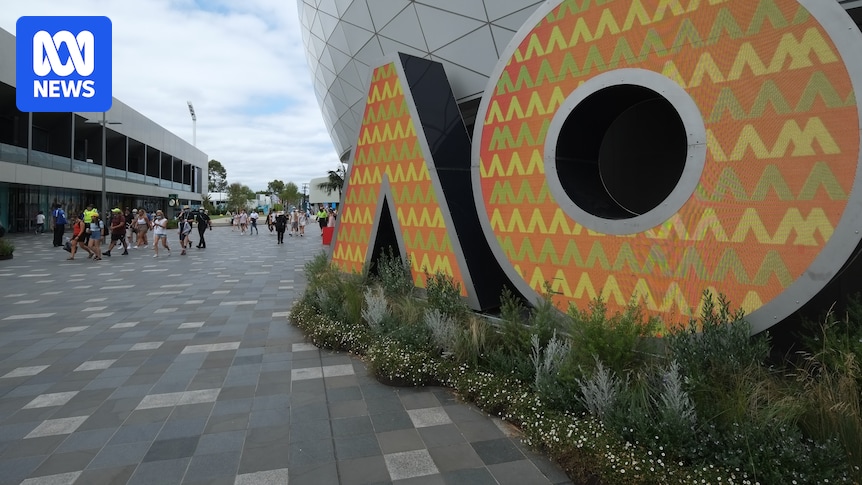
More than 1.1 million visitors flocked to the Australian Open last year, and similar numbers are anticipated at Melbourne Park this year. However, with the cost-of-living pressures mounting for Australian families, questions have arisen about whether “the happy slam” remains affordable for families.
Currently, all-day ground passes are priced at $59 on most days, with prices rising to $85 on Fridays and Saturdays. These passes grant access to Melbourne Park and smaller courts but exclude the main arenas. The tournament has made efforts to attract families by offering cheaper tickets for children and allowing attendees to bring their own food and water.
Family-Friendly Pricing or a Costly Outing?
Ground passes for children aged 3-11 years are priced at $15, while tickets for those aged 12-17 cost $35. This means a family of four can expect to pay between $148 and $188 just to enter Melbourne Park. Tennis Australia CEO Craig Tiley has emphasized the event’s affordability, describing it as “the most affordable event there is” in Melbourne for families.
“There’s a very low threshold for families to come,” Mr. Tiley told ABC Radio Melbourne. “The $59 dollars doesn’t cover one two-hour event, it covers the entire day and night, offering a full day’s entertainment.”
Despite these assurances, opinions among attendees are mixed. Eduardo, attending with his sons Julian and Matteo, described the experience as worthwhile but noted the high cost of food. “It’s a little bit expensive, especially the food. You spend a lot of time in the line for a small portion … big price,” he said, adding that they had spent $150 in just a few hours.
Fan Perspectives on Affordability
Sarah and Andrew, who brought their children Georgia and Brody, found the tickets to be good value, though they echoed concerns about food prices. “I think the ground pass tickets are good value, the food’s expensive,” Andrew remarked. Sarah pointed out the option to bring food, which they took advantage of.
Others, like Ben and Winter, expressed that the event was on the verge of being unaffordable. “For one day for 60 bucks, and then for the food also to be a lot, if you don’t plan on getting food then maybe,” Winter said. Marta and Alexis also found the beer prices steep, with Alexis spending $60 and expecting to spend more.
“It’s expensive but it could be worse … cost-of-living crisis, it is what it is right?” Marta commented. “We’ll probably spend a few hundred dollars today.”
Economic Context and Spending Trends
Adjusted for inflation, prices for weekday ground passes actually peaked in 2018 and have remained stable since the COVID-19 pandemic. Despite this, household spending has dipped across Australia over the past year. Yet, recent figures indicate Australians are spending more on recreational events.
Visa’s Spending Momentum Index, which tracks purchases across Australia, shows discretionary spending reached its highest level since April 2021. The Australian Bureau of Statistics reported that spending on recreation and culture hit a record $14.4 billion in November 2024, up from $9.3 billion in November 2019.
This increase comes after three years of high inflation, with the inflation rate still exceeding pre-pandemic levels and Reserve Bank of Australia targets.
Expert Insights on Event Pricing
Heath McDonald, Dean of Economics, Finance, and Marketing at RMIT University, has collaborated with major organizations on pricing strategies. He noted that while consumers may cut back during tough economic times, they often prioritize beloved events.
“Instead of going to five different things, you go to the three things you like the most, or maybe cut it right back just to go to one thing,” he explained. “We’ve seen in AFL, where I’ve done a lot of work, that people hang on to their AFL memberships. If they’ve been a 10-year member, there’s almost no chance that they’ll give it up.”
Professor McDonald described pricing major events as “a real juggling act” for organizers, who must balance affordability with financial sustainability.
“I know that it’s top of mind … real science sits behind pricing strategies,” he said. “I know the AFL, for example, they price for a long time, and they’re very careful about when they do their price increases to make sure that they’re not getting out of step with the competition and public expectations.”
The affordability of the Australian Open remains a topic of debate among fans and analysts alike. As the tournament continues, the conversation around pricing and accessibility is likely to persist, shaping future strategies for both organizers and attendees.







